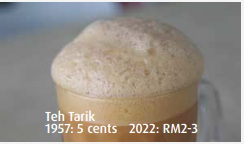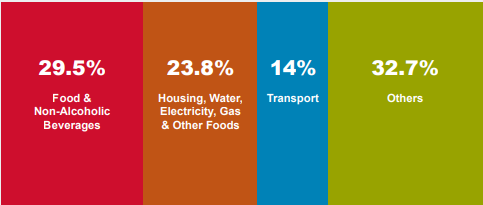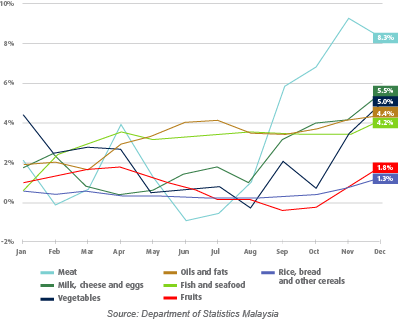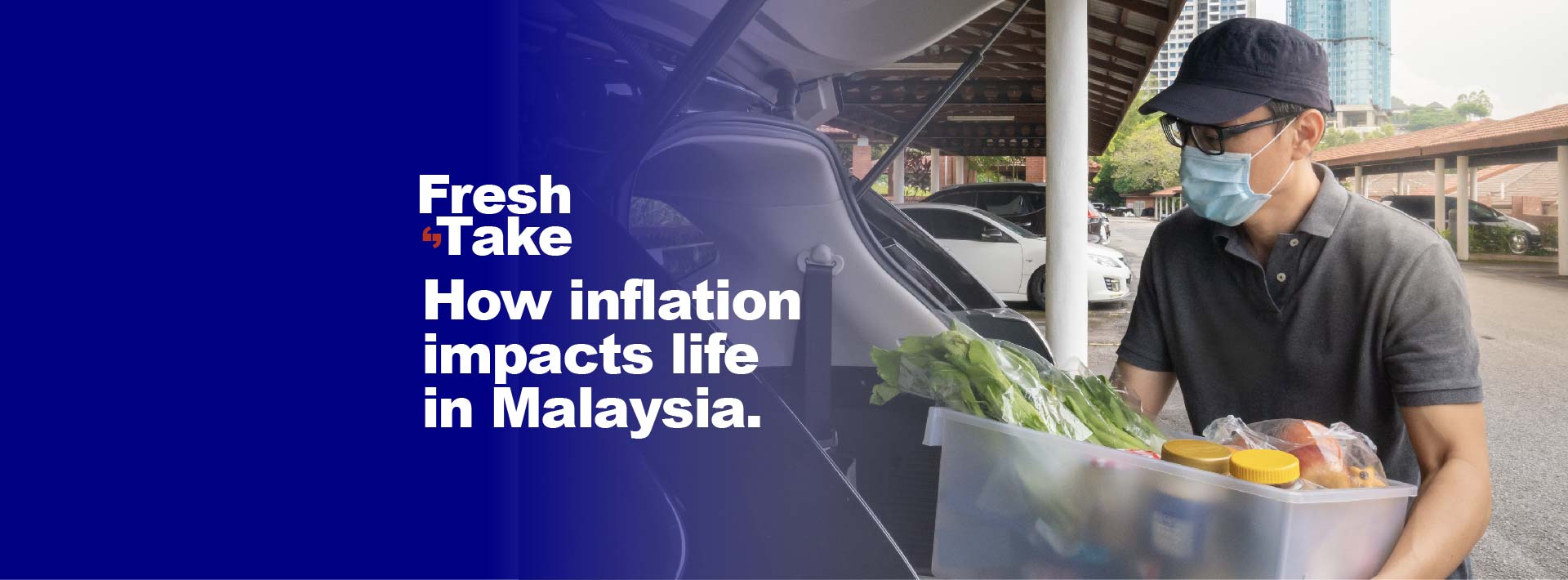Inflation affects everyone, just not equally.
Most people feel that the
cost of living is getting more expensive every year. It’s true, but some items
are more affected than others.
Our take on this: We’ve written about global inflation before; you can
read that article here. In this article, we go through inflation from a local
perspective — what triggers it, and how you can better prepare for it.
Inflation can
look scary

The general definition of inflation:
The decline of purchasing power of
your money over time. In other
words, what can you buy with
RM10 today will be less than what
it could buy you 10 years ago. Look
even further back and the
difference can be shocking.
The inflation figures that we see reported are calculated using a
weighted average price level of a basket of selected goods and services
over a set period of time: this is the Consumer Price Index or CPI. It is a
national average — therefore, the prices in an urban area are likely to be
higher than in rural areas. Also, this ‘basket of goods’ only contains primary
consumer goods, not luxury or premium goods.
Understanding Malaysia's CPI
When households spend more of their income on a particular item, that
item ends up having a larger ‘weight’ (therefore, it affects the CPI more).
The larger the weight, the more effect a change in price of the item would
have on overall inflation. This gives us as a good gauge of what most
households spend their money on, and where inflationary pressures are
coming from.
Top 3 contributors to Malaysian CPI weightage:

Source: Department of Statistics Malaysia, as at Dec 2021
Shortcomings of the CPI as a measure:
According to the Department of Statistics Malaysia, prices were taken
from 17,000 retail outlets in states of Peninsular Malaysia, 2,500 outlets in Sabah and 2,300 outlets in
Sarawak. This may not reflect where you live,
your consumption habits, and what you choose to spend your money on.
The important thing to remember here is the CPI is used to paint a
picture of the current trends and at least give you an idea of what you
need to prepare for in the future or to adjust your spending habits.
Three types of inflation:
There are a number of factors that drive inflation — some are easy to
manage, while others are ingrained in our society’s structure and will likely
be around for a while.
Demand-Pull
Inflation
The ‘good times’
indicator:
Usually seen in times of
strong economic growth,
when demand surpasses
supply, forcing an increase
in the cost of living. It may
be a sign of rising salaries,
lower unemployment and a
growing desire for better
standards of living.
Real-life example:
It’s like what happens to
hotel room rates (and even
certain food types for
festive occasions) during
peak and off-peak seasons.
Cost-Push
Inflation
Higher costs
of goods sold:
Increased production cost
due to rising raw material
costs driven by global
shocks, geopolitical unrest
and trade wars. A blockage
of shipping routes (like
2021’s Suez canal
obstruction) can do the
same.
Real-life example:
Due to global geopolitical
issues, climate change and
other factors, the prices of
fertiliser, flour and grain
have risen due to supply
shortages.
Built-In
Inflation
It keeps spiralling,
and is hard to reverse:
Even expectations that
inflation will persist into
the future can drive prices;
workers will demand
higher wages to maintain
their standard of living,
leading to even higher
production costs, driving an
upward wage-price spiral.
Real-life example:
While property prices rise
due to construction costs
(raw materials and labour),
it still remains an attractive
investment vehicle for
many who accept higher
prices as a reality that they
have to live with.
Malaysia’s Food
Inflation; a breakdown
Which food items are actually driving inflation in Malaysia?

Source: Department of Statistics Malaysia
Heavy rains throughout December 2021 directly impacted the supply of
vegetables, fish and other seafood – the most common foods for
Malaysians. External factors such as global prices of animal feed and other
grains ended up driving chicken prices, while the ongoing Ukraine war is
driving oil, gas, grains and fertilisers – bad news for agriculture.
Some good news: It’s good to remember that a controlled level of inflation
is a sign of a healthy economy. It’s like the earlier described
demand-pull inflation — a signal that people have the means and confidence
to spend. Economic theory such as the Phillips Curve also suggests
that higher inflation leads to lower unemployment, at least in the short term.
Some goods appreciate during inflationary times: Property and luxury
goods tend to see a rise in prices. As an investor or a collector, you could
find your prized possessions have risen in value.
Work your money
harder than inflation
Can you escape this trap? Or at least stay ahead of the curve? You can,
but only if your money is growing at a rate that is higher than or at least
equal to the inflation rate. Leaving your money in a savings account might
not achieve this, but properly thought out investments may be able to.
You could also relook into the funds or investments you currently hold,
and take stock of their performance. As long as your money is growing at
a higher rate than inflation (or at least equal to it), you’re doing ok.
Otherwise, it may be time to check out some alternatives that can help
you through these times. HLB offers a complete suite of funds, and you
can explore them all here.
This article is part of Hong Leong Bank’s educational series, called ‘Fresh Take’.
Here, we seek to present you a fresh, unbiased perspective of all matters financial.
We’ll be uploading more educational content moving forward, so do watch out for
the next piece.
In a world that’s awash with information that may be either true, false or
anywhere in between, Fresh Take aims to cut through the clutter, and help you on
your journey as an investor who’s seeking to build a strong financial future.
Please reach out if you need to know more,
or need personalised help.
